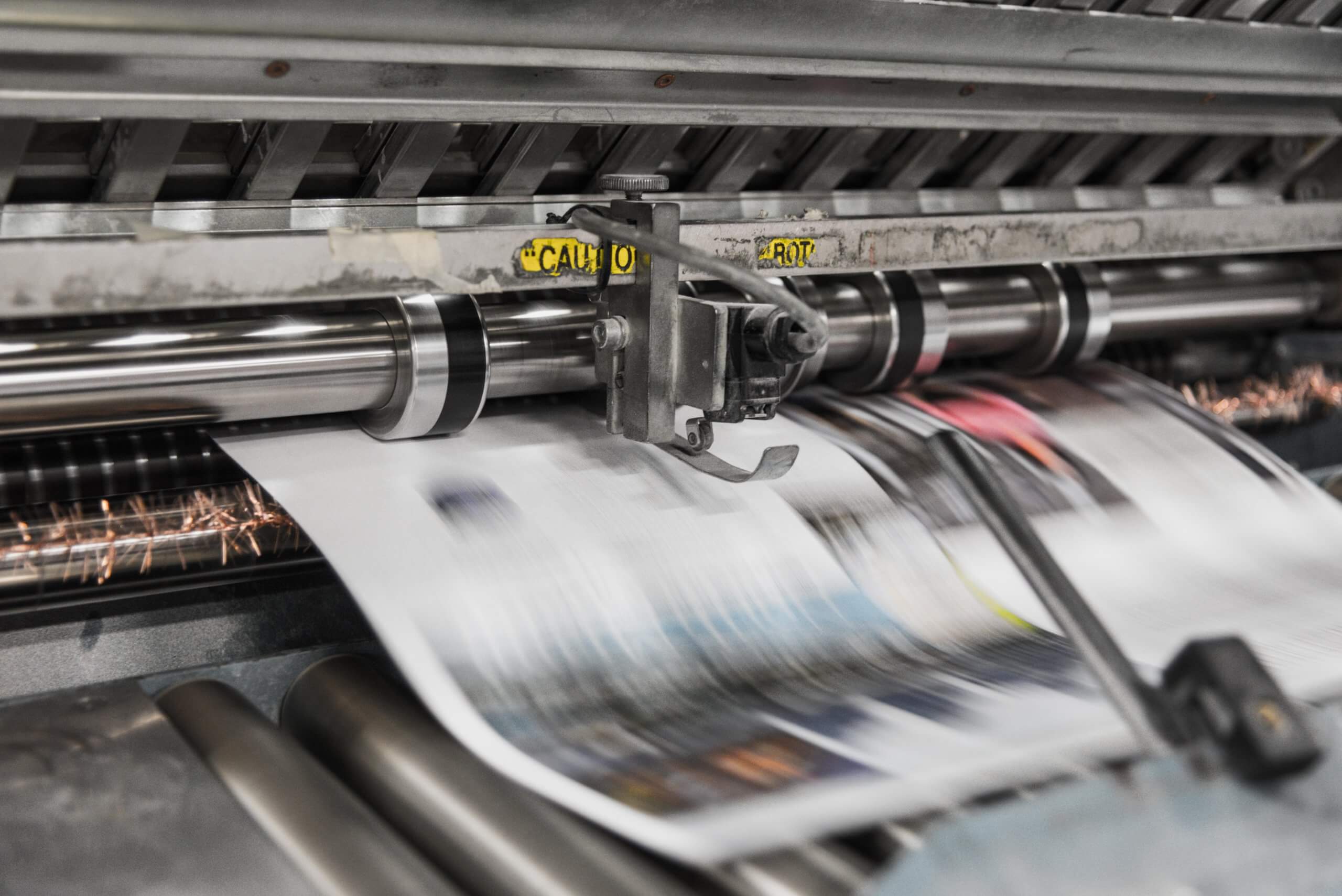Welcome to the world of Flexible Packaging Manufacturing, where the materials and designs come together to protect your valued possessions until they find their way into your hands. The role of packaging materials extends far beyond the surface. From the elements of hygiene and seal strength, ensuring airtight preservation, to the durability that shields against abrasion and falling impact, each facet plays a pivotal role in the protection of your precious goods.
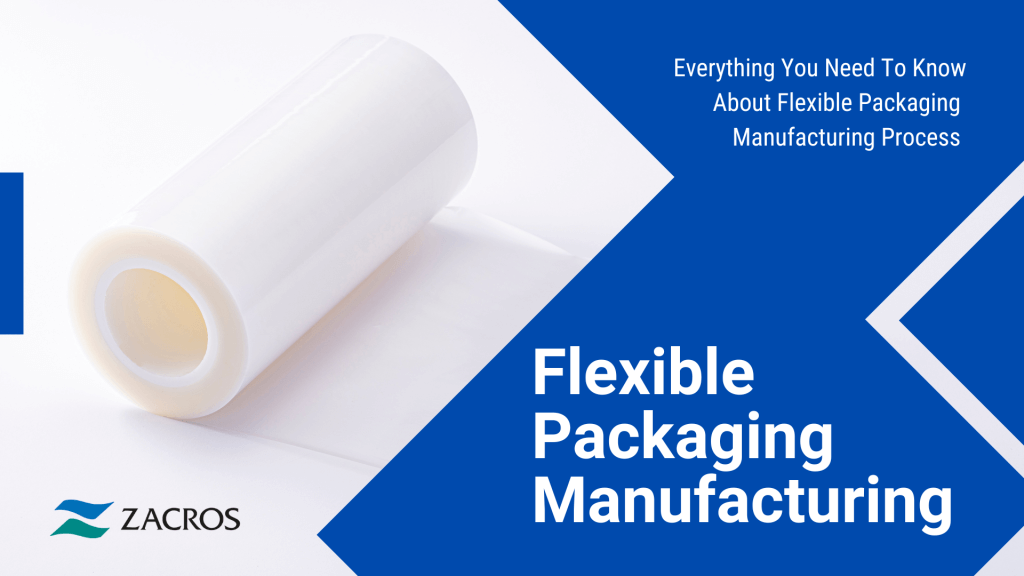
Yet, packaging is not just a functional necessity; it serves as a canvas for product appeal, a bearer of essential ingredient information, and a guide to usage, among other vital roles. Join us as we delve into world of packaging, exploring its significance and the meticulous craftsmanship behind the scenes.
Abrasion – a scraped spot or area.
Flexible Packaging Types
Flexible packaging can be a various types of packaging. Some of the common types are stick pack, sachet, gusseted pouch, pillow pouch, zipper pouch, and spouted pouch. There are many combinations of types and materials to choose from.
Flexible Packaging Materials
![]() Resin
Resin
There are several different types of resin used for packaging. It is important to note the type of resin as it is the base for the packaging material.
Resin – a thick, sticky substance produced by plants or made synthetically, often used for its adhesive properties or in various industrial applications like plastics, adhesives, and coatings.
Most Common Types of Resin Used in Flexible Packaging
- Polyethylene (PE) – Most common in the US. Good sealant, good water barrier, wide grade slate (HDPE, LDPE, LLDPE).
- Polypropylene (PP) – Higher melt temperature, good moisture barrier, heat sealing
- Polyethylene Terephthalate (PET) – Highest melt temperature, good gas barrier, excellent print layer
- Nylon – Very tough, high heat resistance, good oxygen barrier, good chemical resistance
- Ethylene-Vinyl Alcohol (EVOH) – Excellent oxygen and oil/solvent barrier but affected by moisture
- Tie Layers (EMA, EVA, EAA, AMP) – Bond together dissimilar materials, different chemistries needed to bond different materials
Flexible Packaging Basic Configuration
Packaging creation involves strategic selection and fusion of diverse materials through lamination, crafting the required functionalities for the packaging. Why do we need to laminate? We need to laminate because there is not a single film that is all purpose. Unlike metal cans and glass bottles, which are rigid packaging, soft packaging materials can be composited with various types of films.
Examples of Different Configurations
- Grocry Shopping Bag – uses LDPE. The air is permeable, and the water vapor is impenetrable. It is inexpensive and no special features are required.
- Refill Pouch– uses PE based materials. These have stable seals, a water vapor barrier and have clean print.
- A Retort Pouch – uses PET, aluminum foil and CPP. These have long-term storage capabilities, economical and resistant to heat.
Converting – to change (something) into a different form or properties.
LPDE– low-density polyethylene
PET– positron emission tomography
CPP– cast polypropylene
The performance and cost of various grades of the same material can differ significantly. Therefore, the process of choosing these materials holds immense importance in determining their suitability for the intended purpose.
The general structure of a flexible packaging has three features: substrate, barrier material and sealant.
Substrate – Base material which processing is conducted.
Barrier Material – Material to protect contents by suppressing transmission of water vapor, gas, light, etc.
Sealant – Material that is welded by heat to form a sealed layer of film.
Flexible Packaging Manufacturing General Process
The performance of packaging varies based on the manufacturing process, including lamination method, as well as the choice of adhesive materials like resin or adhesives.
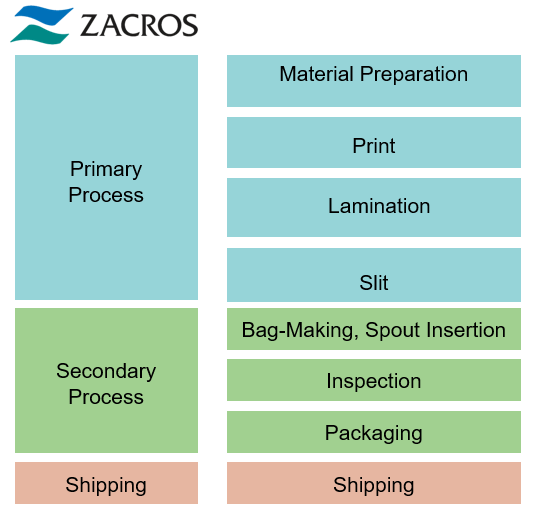
Printing
Following the preparation of materials, the next step is printing. Printing can be front print and back print. Some of the types of printing are gravure printing, flexography, and digital printing.
- Gravure printing – is an intaglio process that produces fine, detailed images. It can be used for high-volume printing of packaging, wallpaper, and gift wrap.
Advantage: This is the only type of printing that has a high speed and volume print process capable of printing continuous tone images.
Disadvantage: Gravure printing is not as competitive on price.
- Flexography – is a method of printing that uses rotary in-line features. Therefore, you can print things on flexible materials, such as plastic, cellophane, and metallic film.
Advantage: This offers a faster production speed over other printing techniques.
Disadvantage: Flexographic printing equipment are complex, especially the integral systems.
- Digital printing – is a process of mapping out an image onto a chosen surface – a shirt, a custom tumbler, a beanie – and using minute droplets of ink transfers that image onto it.
Advantage: Its speed! Compared to the other printing methods, digital printing offer a fast turnaround due to its easy set up.
Disadvantage: There are limited color matching capabilities, especially matching pantone colors.
Lamination
The next step is lamination. Laminating is the process through which multiple flexible packaging webs are joined together using a bonding agent. There are two types of lamination processes: Wet lamination, dry lamination, solventless lamination and extrusion lamination.
- Wet lamination
The bonding agent is still in a liquid state when the webs are joined together. It is commonly used to produce paper-aluminum foil laminate that is used extensively in flexible packaging.
- Dry Lamination
The bonding agent dissolves into a liquid (solvent/water) then applied to one of the webs before being evaporated in a drying oven. The adhesive coated web is laminated to the other under intense pressure and using heated rollers. This improves the bond strength of the laminate.
- Solventless lamination
The adhesives used do not contain solvents. This adhesive is composed of two components reacting with each other and subsequently does not require drying.
- Extrusion lamination
During this process no adhesive is used and the lamination is done with the help of molten poly. One film is coated with polymer which assist adhesion of poly on the film.
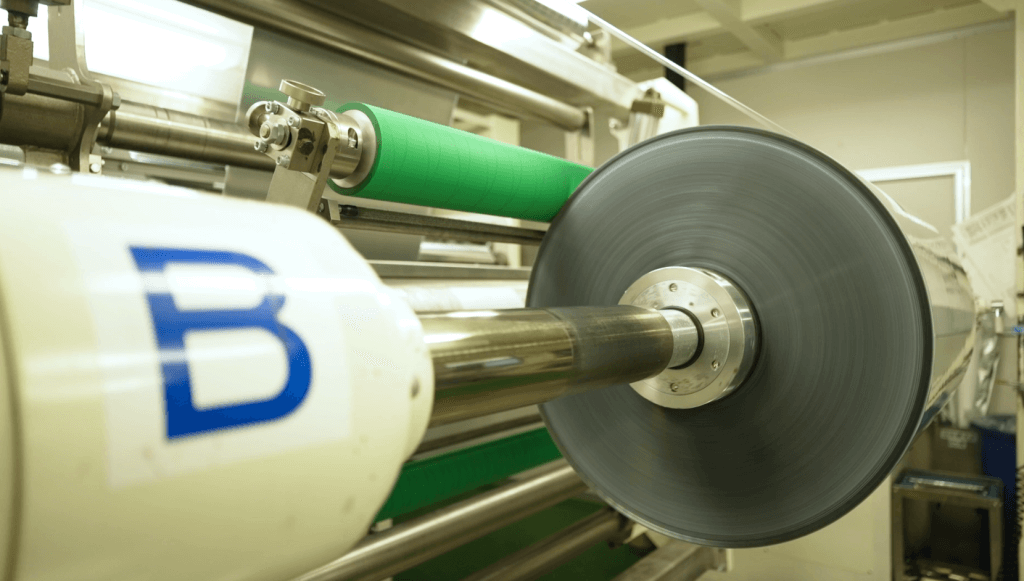
Slitting
Slitting is a process that divides the master rolls into several smaller rolls.
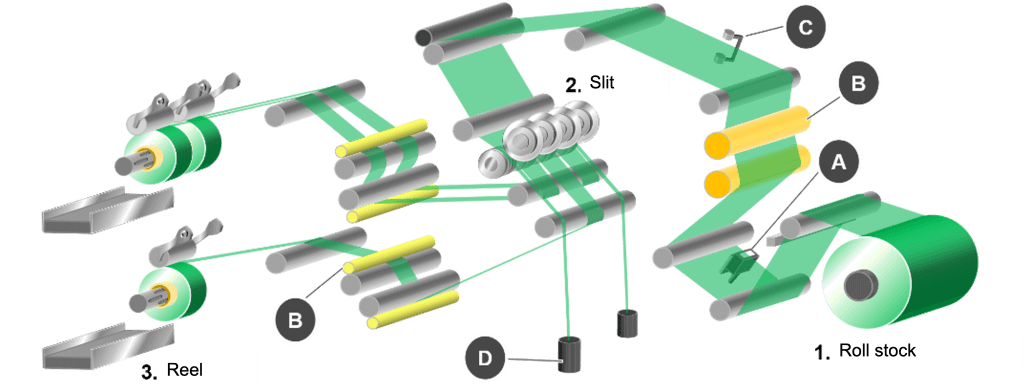
Bag-Making
The bags are processed in sequences on a machine and turned into individual bags. Sealing becomes critical for the bag-making process. There are two different sealing techniques that commonly used: heat sealing and impulse sealing.
- Heat Sealing
Heat sealing is the process of fusing and adhering film together with heat. There are three elements that determine the condition: seal temperature, seal pressure and seal time.
Heat Seal Flow Process
-
-
- Apply heat to the area to be sealed.
- Heat is transferred to the film interface and melts the interface.
- Selant films melt together.
- By hardening and cooling, the parts will adhere.
-
- Impulse Sealing
Impulse Sealing is powered tool designed for effectively sealing various types of plastic packaging, commonly used for sealing poly bags that contain sets of parts or components. One of the advantages of using impulse sealers over heat sealers is that there’s no warm up or cool-down time needed. So, they are safer and more efficient especially if you are in a hurry.
There are 3 main types of equipment that are used to manufacture flexible pouches.
- Pre-Made Pouch (example pouch format: spouted pouch and zipper pouch)
The roll stock is cut in half and then forms films in the front and back of the bag. The bottom film is inserted and sealed followed by being heat sealed on the body. The pouches are cut individually by punching. A spout and a zipper can be inserted during the sealing process.
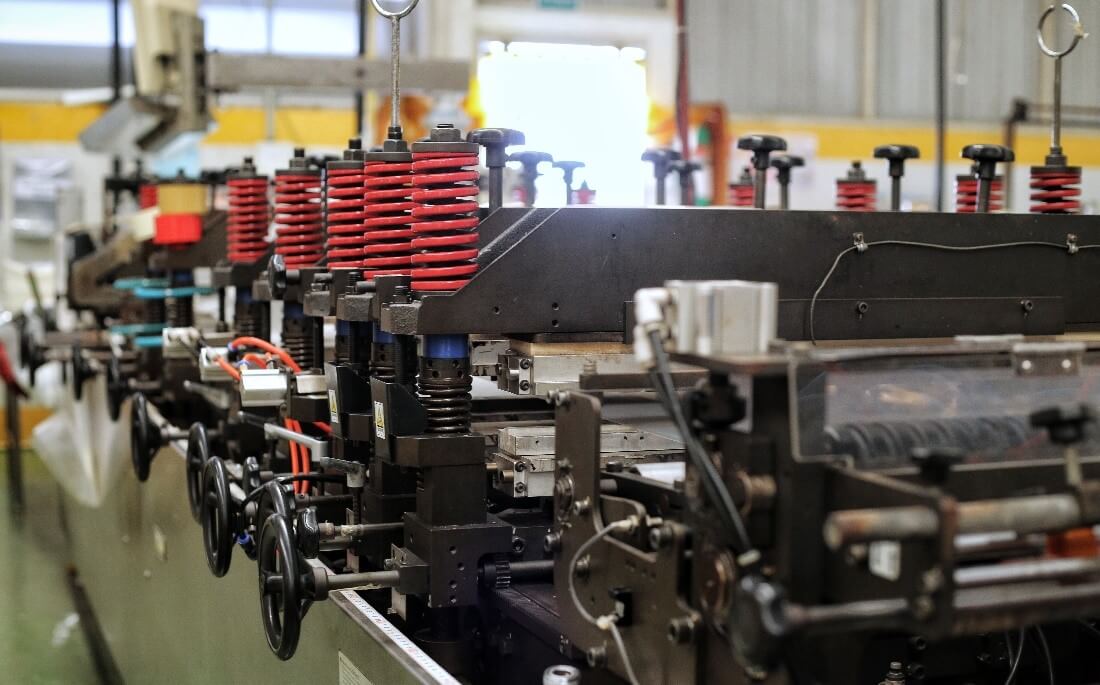
- Horizontal Form Fill Seal (example pouch format: spouted pouch shaped pouch)
Horizontal Form Fill Seal (HFFS) machine produces a pouch from roll stock film and at the same time, filling and sealing of packaging in one machine. This machine is typically used for small volume products.
- Vertical Form Fill Seal (example pouch format: pillow pouch)
Once the film enters the Vertical Form Fill Seal (VFFS) equipment, first, it folds around the forming tube. With a vertical sealing bar, the film becomes a long hollow tube. Then, it goes through sealing and filling. VFFS provides the highest speeds among different equipment, however, it has less flexibility in pouch design.
Spout Inserting (for Spouted Pouches)
Spouts are often inserted after converting pouches. A spout inserter is a machine that supplies bags and welds spouts. Bags are fed from the right side and products are delivered from the left side.
- Prepare pouch
- Film welding
- Cooling
- Inspection
- Discharge
A camera is used to check all spouts for defects in appearance and positioning. If there are any defects then, they are automatically discharged as ‘no good’.
At the end of this long process, we finally have flexible packaging! Some flexible packaging complete the filling of products during the bag-making and others still require a filling after the bag-making process.
Flexible Pouches
Are you interested in flexible pouches? ZACROS has manufactured flexible pouches for home and personal care products for over 25 years. ZACROS provides a wide range of flexible pouches, from a spoutless laminated pouch to a monomaterial spout pouch. We assist with material selections and designs to filling assist. Contact us today to learn more about sustainable refill pouch options.
References
Gravure Is The Process Of Producing… (gaa.org)
What Is Flexographic Printing? – Complete Overview (2020) | Printmatics
printify.com/pod-glossary/digital-printing/
https://www.bobst.com/been/products/laminating/process/
What is an Impulse Sealer? – The Packaging Company
Advantages of Gravure Printing in Packaging – Law Print Pack
https://www.linkedin.com/pulse/lamination-processes-flexible-packaging-sunil-daniel/
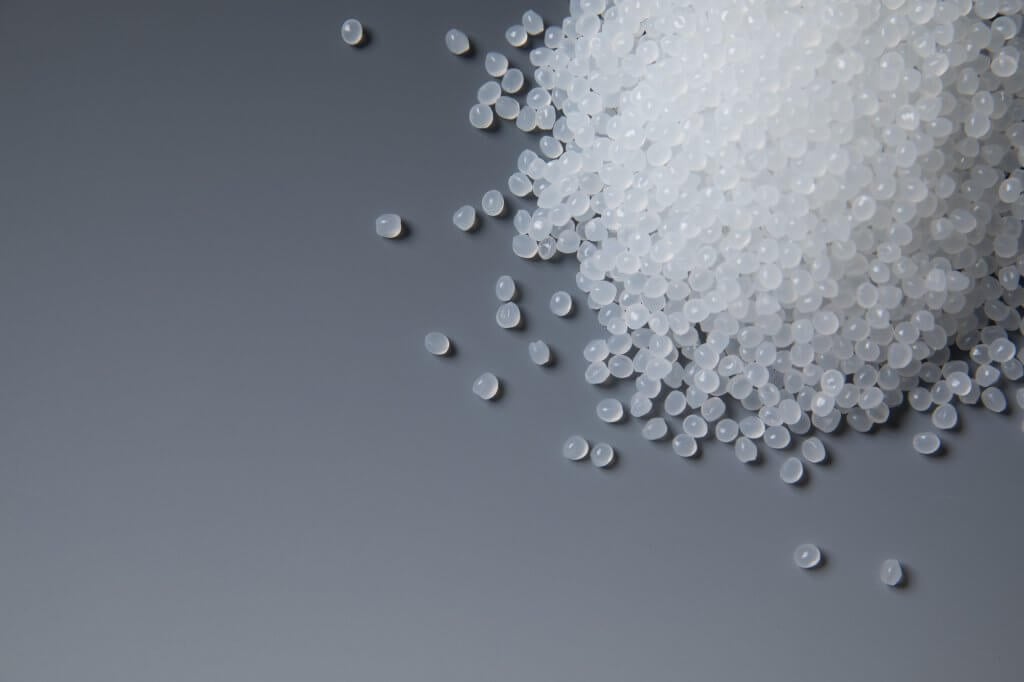 Resin
Resin